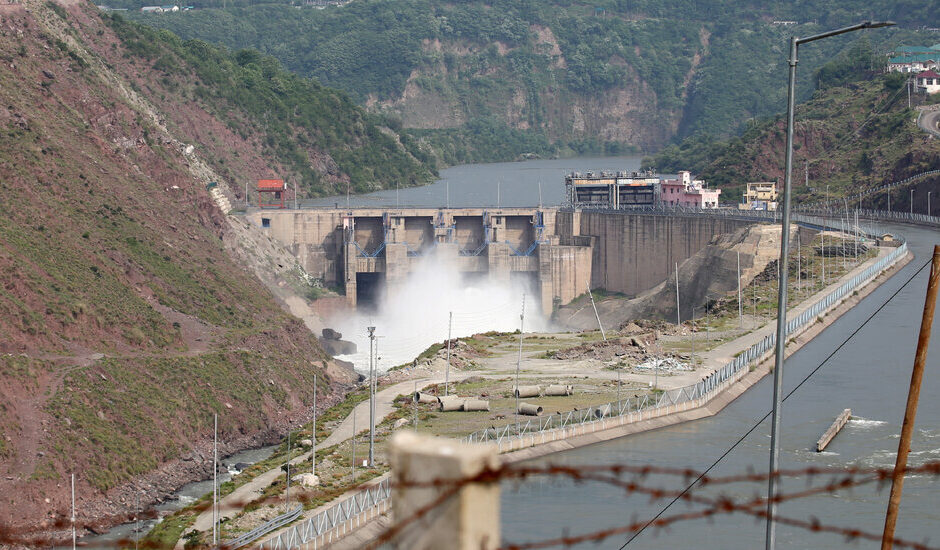Even as India was gearing up to use its military to strike at Pakistan this week, calling it revenge for a terrorist strike in Kashmir last month, the government was pursuing other forms of power projection as well: bloodless and more refined, and mostly aimed at Pakistan’s economic vulnerability.
On Friday, May 9, the executive board of the International Monetary Fund is scheduled to meet three blocks from the White House. Indian officials have suggested that they will make a new case there: that the Fund should refuse the extension of a $7 billion loan to Pakistan described as crucial to getting the country on more solid footing financially and to fund desperately needed services for its people. And though Indian officials will not confirm it, other potential sources of Pakistani aid may also be in India’s sights, according to domestic media reports.
In two weeks before its strikes against Pakistan on Wednesday, India was already testing new ways to aggrieve its old enemy.
On April 23, India pulled out of a river-sharing treaty that has safeguarded Pakistan’s vulnerable water supply since 1960. Pakistan called it an act of war.
India turned to its softer power, as well. As tensions rose after the terrorist attack in Kashmir, India tinkered with its internet controls to cut off Pakistani musicians and cricketers from their audiences on Indian social media, much as it blocked Indians from using Chinese-owned TikTok after a clash with China in 2020.
India also announced that it would sever all trade between the two countries. In practice, there wasn’t much to begin with. India exports mainly sugar, medicines and some other chemicals to Pakistan. Some Indian exporters said they never got a legal notice from the government — so they are still fulfilling contracts.
But Pakistan was only shipping a paltry $2 million in goods to India before this flare-up. The economic asymmetry between these unhappy neighbors is more striking than ever.
The more financial forms of pressure happen mostly behind closed doors. Local news outlets reported that Indian officials have been saying they are working to persuade the Fund and similar institutions to punish Pakistan.
“It would be surprising if India did not take a stance” against loans to Pakistan, said Sudipto Mundle, who served as the Asian Development Bank’s chief economist in New Delhi.
“These institutions have the appearance of corporate banks, but they’re basically very political institutions,” said Mr. Mundle, now the chairman of India’s Center for Development Studies. Loans are supposed to be approved on the merits of a particular project, he said, but “at the end of the day, the things get decided by which side the various members of the board are aligned with.”
Mr. Mundle remembers how the Asian Development Bank bank canceled a loan to India that had already been approved in 1998, in response to India’s test of a nuclear bomb. The United States and most other countries that mattered were angry at India for starting a nuclear rivalry with Pakistan, as they saw it.
The same countries are more sympathetic to India these days, and not only as a victim of terrorism. Its economy has grown to 10 times the size of Pakistan’s, and its workers and consumers appeal to strategists who yearn for an alternative to China.
Earlier on the very night of India’s strikes against Pakistani targets, India and Britain announced a free-trade agreement that had been in the works for three years. India is working to seal deals with the United States and the European Union, too.
But there are also reasons for financial organizations based in Washington to hesitate to indulge India in its effort to cut Pakistan off. Those institutions, recognizing Pakistan’s economic vulnerability, may be reluctant to plunge the country into deeper instability after years of loans and programs aimed at improving its debt and currency stability.
India has contradicted a report that its finance ministry was lobbying the Asian Development Bank itself to reconsider lending to Pakistan. But it did not deny similar reports that it will try having Pakistan put back on a “gray list” maintained by a global anti-money-laundering and antiterrorism task force. The listing would threaten Pakistan’s ability to get financial assistance, and the country had spent years struggling to get off it before finally succeeding in 2022.
T.C.A. Raghavan, who served as India’s high commissioner to Pakistan from 2013 to 2015, said the “gray list” is powerful, but that India’s sharpest nonmilitary tools in this conflict are its relationships with other countries.
“There the equations have changed very, very dramatically.” In particular, India’s relationships with the Gulf monarchies, in Europe and with the United States, “those relationships have changed a lot in the last 10 or 15 years,” Mr. Raghavan said.
He was working on Pakistani affairs before 2008, when Pakistan-sponsored terrorists raided Mumbai and killed 166 people. After that incident, Mr. Raghavan said, “most countries understood very clearly” the nature of India’s problem.
#India #Squeeze #Pakistan #Battlefield


